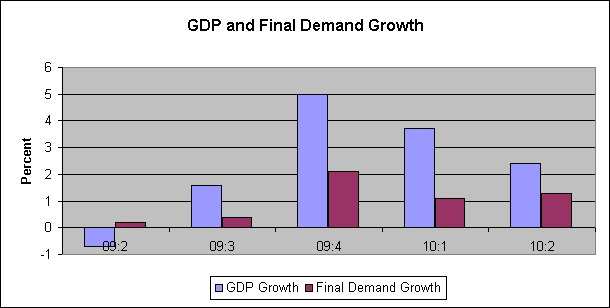July 30, 2010
Economics seems to be the science of forgetting. All the great truths that were pounded into our heads when we grad students, or even undergrads, seem to be missing from the thinking of those making pronouncements on the economy and economic policy.
For example, the housing wealth effect, a well-established economic doctrine firmly rooted in the center of the discipline, seems to have disappeared from most discussion of consumer spending patterns. The basic point — that a dollar of additional housing wealth leads to 5-7 cents in additional consumption each year — explains both the consumption boom at the peak of the bubble and the falloff in consumption in the wake of its collapse. Instead of noting the huge amount of lost housing wealth and recognizing the drop in the consumption and rise in the saving rate are permanent, economists and economics reporters are looking at consumer attitudes and hoping that greater optimism will lead to a new spending boom.
In the same vein, it is remarkable how little attention a very classic inventory cycle has received in explaining the changes in GDP over the last five quarters. The basic story is that firms were shedding inventory as fast as they could in the 4th quarter of 2008, with the rate of decline increasing into the first quarter of 2008. Although inventories continued to decline in the second quarter, they declined at a slower rate, which meant that inventories added to growth. Eventually firms stopped cutting inventories and began rebuilding. In the most recent quarter they were adding inventories at a very rapid pace, $85.9 billion a year.
With the latest figure, the inventory cycle has come to an end. I don’t have a crystal ball telling me the rate of inventory accumulation in the next few quarters, but it is unlikely that it will be much higher than the current rate. This means that inventories will provide little boost to growth in future quarters, making GDP growth look like final demand growth and that is not very good.
While GDP growth has been erratic over the last four quarters, final demand growth has been much less so. It has been consistently weak, averaging just 1.2 percent. In the most recent quarter it was 1.3 percent. So unless we have some good reason for final demand growth increasing (state and local cutbacks, the end of the housing tax credit, and the phasing down of the stimulus all push the other way), we can expect very slow GDP growth for the next several quarters and rising unemployment.












Comments